Noboru Ogata (Professor Emeritus, Kyoto University)
This page presents my records and photos during a research trip made by the Research Group on the Travel by Xuanzang (Sep. 23 - 28, 1998). Xuanzang departed China secretly in 629 and after a hard travel he arrived in Gaochang Kingdom. The king of Gaochang received him warmly and supported his pilgrimage financially. The dominion of Gaochang covered the modern Turpan Basin and the site of its capital is known as Gaochang city ruins.
Sep. 23: Arrived in Wulumuqi via Shanghai. Joined the main research caravan. Stayed in Wulumuqi.
Forenoon, Sep. 24: Traveled from Wulumuqi to Turpan.
Landscape of Wulumuqi city. |
Afternoon, Sep. 24: Visited Karez Park and Jiaohe city ruins. Stayed in Turpan.
CORONA satellite photograph over the Jiaohe city ruins (29/Sep/1966).
Jiaohe city ruins can be viewed in the center of the photo as a spindle-shaped terrace. The main street runs through the city, and ruins of a Buddhist temple are located at the end of the main street. The city is surrounded by precipitous cliffs of 30 meters in height and the peninsula seems to have been cut off artificially from its base. |
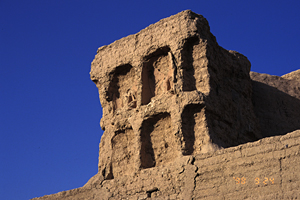 |
 |
|
Jiaohe city ruins |
Forenoon, Sep. 25: Visited the ruins of a Buddhist / Manichaean temples at Shengjinkou and Bazeklik Cave Temple.
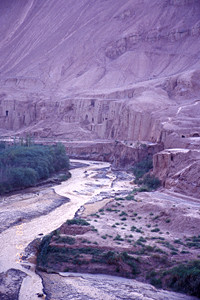
|
Flaming Hills on the way from Turpan to Karakhoja |
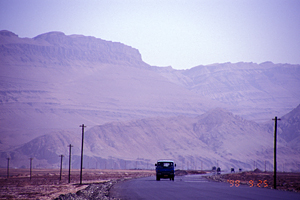 |
Ruins of a temple at Shengjinkou |
||
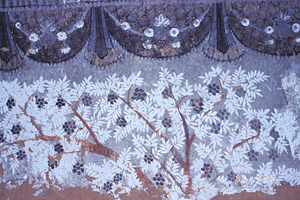 |
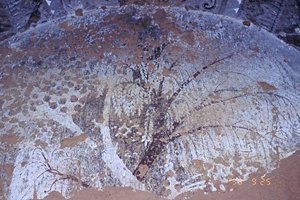 |
|
It is considered that icons of trees
are associated with Manichaeism. |
Afternoon, Sep. 25: Visited old tombs at Astana and Gaochang city ruins. Stayed in Turpan.
CORONA satellite photograph over the Gaochang city ruins (29/Sep/1966).
The city of Gaochang was located in the middle of the fluvial fan of Karakhoja. The photo shows it had triple city walls. The remarkable feature at the southwest corner are ruins of a Buddhist temple. Just outside of the east wall, we can see a line of maintenance wells of a karez (underground irrigation canal) peculiar to this region |
 |
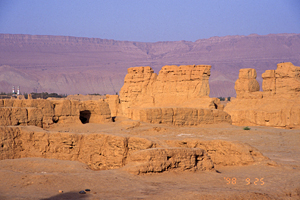 |
|
Gaochang city ruins |
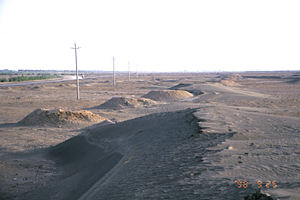 |
 |
|
Dance of Uighur people |
Sep. 26: Traveled from Turpan to Wulumuqi and visited a mosque and bazaars there. Stayed in Wulumuqi.
Bazaar in Wulumuqi |
Sep. 27: Traveled from Wulumuqi to Shanghai. Visited Shanghai Museum. Stayed in Shanghai.
Sep. 28: Departed Shanghai home.
Created by Noboru Ogata
Last Updated: 07/Nov/2007
![]()